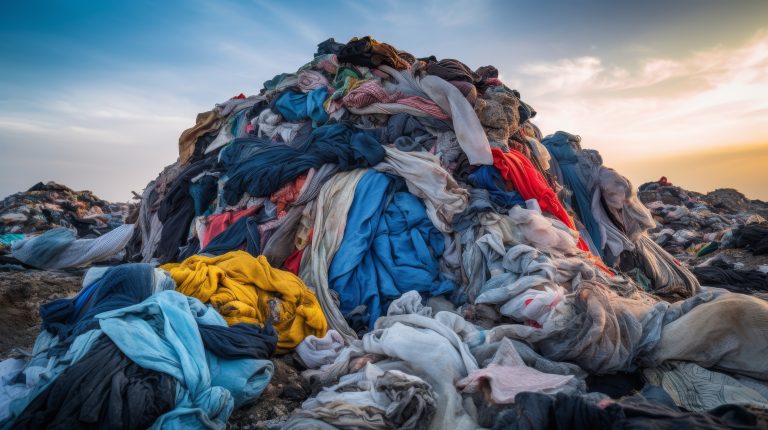According to a study, global clothing consumption generated more than 20 million tonnes of plastic waste in 2019, of which around 40% was improperly managed and potentially contributed to environmental pollution, a process known as “plastic leakage.”
Researchers from North Carolina State University separated textile waste into two sources: clothing made from synthetic materials like polyester, nylon and acrylic, and clothing made from cotton and other natural fibers.
They also looked at plastic waste generated throughout an apparel product’s “value chain” – the entire life cycle of a product, which includes, for example, not just the apparel product itself but the plastics used to package it.
“We analyzed data on imports, exports and clothing production for countries around the world,” Richard Venditti, professor of paper science and engineering at North Carolina State University and co-author of the study, said in a statement, “and compared it to existing global information on different stages of the clothing value chain to estimate how much plastic is leaking into the environment at each stage.”
“Much of the plastic waste that ends up in the environment comes from discarded clothing, especially clothing made from synthetic fibres; waste from tyre wear during manufacturing, packaging and transport, and even microplastics that are drawn into water when clothes are washed.”
The study found that synthetic apparel is the largest source of plastic waste. The synthetic fiber value chain generated 18 million tonnes of waste in 2019, accounting for 89% of the global apparel industry’s plastic waste that year. Of that, the researchers estimated that about 8.3 million tonnes may have ended up in the environment.
Impact of used clothing exports from EU28 high-income and low-income countries, the United States, and Japan on synthetic clothing plastics spill locations – NC State University
Cotton clothing accounted for 1.9 million tonnes of plastic waste, with the remaining 310,000 tonnes coming from synthetic and non-cotton fibres. In contrast to post-consumer plastic waste from discarded synthetic clothing, plastic waste from cotton and other fibres came almost entirely from plastics used in packaging, the researchers found.
They also found that where clothing was sold was not necessarily where plastic waste leaked into the environment: for clothing originally sold in high-income countries such as the United States or Japan, most of the resulting contamination occurred in lower-income countries where these clothing items might be sold on secondary markets.
“Countries like the US have a ‘fast fashion’ culture where people buy a lot of clothes but don’t keep them for very long,” Venditti says. “When they throw away those clothes, they often end up in landfills or at thrift stores. Some of the clothes that end up at these stores are sold in the US, but they often end up in other countries that don’t have waste management systems strong enough to handle the volume, which means a lot of plastic leaks into the environment.”
The study concludes that significant reforms are needed to move the apparel industry towards a circular framework and encourage materials to be recycled and not end up as waste, and also recommends increasing the use of renewable, non-synthetic fibres.
The paper, “The global apparel industry is a significant yet overlooked source of plastic leakage,” was published in Nature Communications and can be read in full here.


